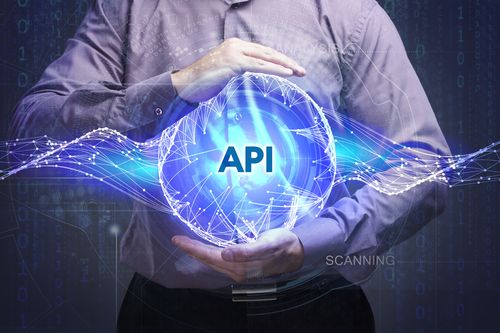
Tom Schenkenberg
August 30, 2017

Tom Schenkenberg
August 30, 2017

As a result of the digital transformation that organizations are making, they often access information via attractively designed websites and applications. Those who look and think further, sometimes take the next step: access via an API (Application Programming Interface). This offers many opportunities, but organizations often see it as a difficult step. But for those who adapt their software infrastructure, I would certainly advise you to consider this step. Especially if your company offers (more and more) added value with data or information.
Due to their digital transformation, many organisations are increasingly letting their services run via their websites and apps. This is also increasingly determining for their success. They offer customers a pleasant user experience with a nice login screen, fine overviews and transaction forms, for example. But what if customers, partners or suppliers do not always want to fill in that beautifully designed form through their own digital transformation? They may want to integrate this in their own application and exchange the information in a different way.
An API is the solution. Everything you can present with a website or app, you can also offer via an API. Your customers and relations then have the choice. The API serves as an interface through which different software applications can communicate with each other, without human intervention. This allows them to automatically exchange data and use functionalities such as the execution of transactions.
Especially for companies and organizations that offer added value by offering data and information, an API offers surprising opportunities. It offers opportunities to market your product(s) in ways that you do not think of in advance. It also offers customers, partners and other parties the opportunity to innovate around your product.
A good example are the newspapers. In addition to their websites, articles are now also offered via an API with a license that regulates payment and use. Take a look, for example, at how simple the New York Times makes that. Our government also opens up a large number of datasets in this way.
It is mainly companies that are missing out on great opportunities in this area. They pack a lot in beautiful websites and mobile applications, forcing customers to do business exclusively this way. This also works (still) for the banks, for example. Every bank has its own website and app. If you do business with different banks, you now have to open websites or apps at all of them in order to withdraw your balance and arrange your banking affairs. There is no central app yet where you can add accounts to keep a central overview. As soon as banks offer an API, this can easily be realized. The European Commission is also working with the new PSD2]payment [directive (https://www.innopay.com/blog/psd2-access-to-account-xs2a-time-to-get-real-about-banking-api-business-strategies/) to force them to offer external APIs.
For companies and organizations that are considering adapting their software infrastructure, it is wise to consider an API infrastructure. Perhaps your own website is (still) the only ’licensee’ of your API for the time being. But I predict that the investment will pay for itself. Especially because of the flexibility to allow external applications and to be able to distinguish yourself from all others who are still ‘chained’ to their beautiful website.
It will also happen more and more often that companies no longer have a website or app, but only offer an API. For example, for Internet or Things (IoT) solutions, which use a central collection app. An example is medical measuring equipment for heart rate, blood pressure and insulin levels. This presents a clear dashboard on the Apple iPhone using the Apple HealthKit. The creators only focus on their measuring equipment. They leave the user experience to others who add value by combining data.
The opportunities and possibilities are enormous. We can now see the applications popping up everywhere. This website has a list of almost 18,000 APIs of modern online companies. What’s next?